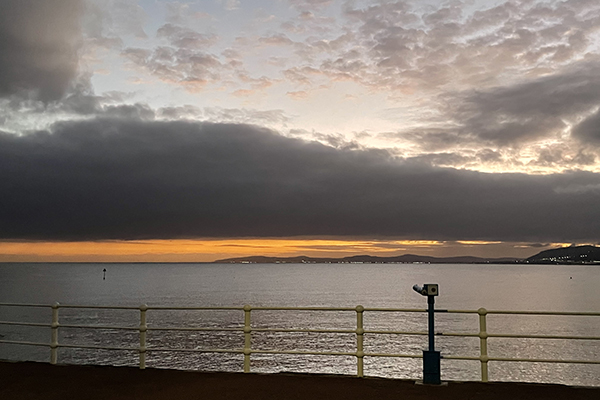My 2nd outing of 2022 took place at the weekend with the target species being Turnstone at Rhos - on - sea. Because of the early tide the nets were set the night before but it ass still only half light when we met up at our designated meeting point to be briefed on the days plans and assigned our different roles. It was, once again great to see some old friends, and catch up with some I hadn't seen for several years!
 |
| Early morning view from the prom at Rhos. |
In the end we caught 46 Turnstone with a few Dunlin, Oystercatchers and Redshank for good measure. Once again I'm always amazed by the difference in shapes of Oystercatcher bills. They exhibit both resource polymorphism, where the bill shape can actually change to take advantage of different food resources, and sexual dimorphism where the bill shape / size is different between males and females. The bill shapes are generally described as being a 'priser' or a 'hammer'. Prisers use their more pointed bill to prise open bivalve molluscs or extract worms from a soft substrate whilst hammerers are a blunt instrument that actually breaks open the shell. I suppose I can relate to that! The photo below of two adult (Euring 8) illustrates this perfectly. The situation is slighlty confusing as males generally have shorter and deeper bills than females but you can find a short billed 'priser' or a longer billed 'hammerer'. Its a great adaptation allowing birds to utilise different food resources.
Once we'd processed the other species attention turned to the Turnstone. Each one was metal ringed above the tarsus before being fitted with a unique red flag with a three letter code on the opposite leg with a coloured 'marker' ring below.
Each bird is then 'processed' where its age is confirmed, wing, total head and bill length and weight recorded along with its ring number and the flag letters.
As with many other wader species ageing Turnstone can be done on the presence or otherwise of buff tips to the retained juvenile inner median coverts - if they haven't all worn off by this time.
Photos below show an adult (Euring 6 - born before last year) and a 1st winter Euring 5 (born last year).
 |
| Turnstone Euring 6 |
 |
| Turnstone Euring 5 |
Another great day and I was back home by lunchtime! Just as well as I forgot to take the snadwiches I'd made up the previous night!































































No comments :
Post a Comment